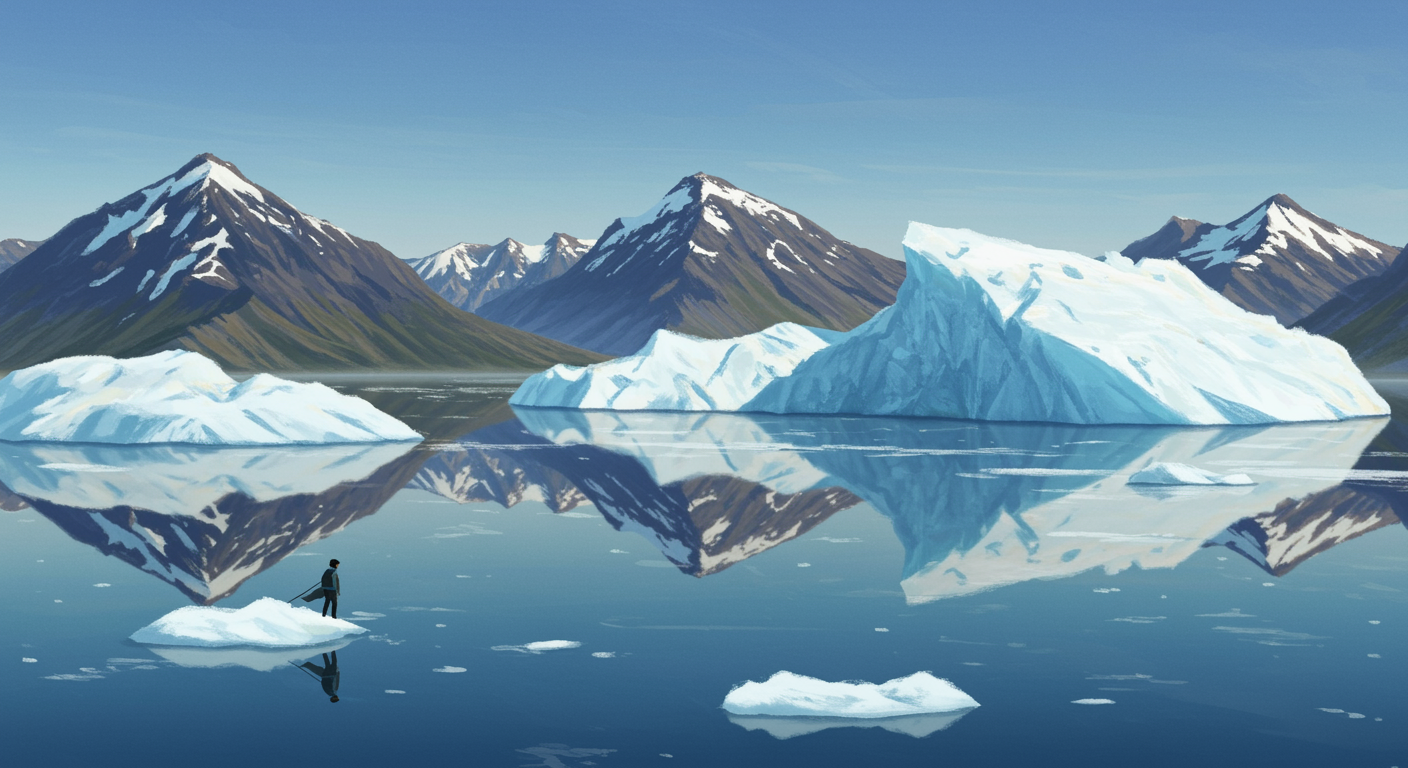
Imagine a landscape that exists completely out of sight, beneath an ice sheet several miles thick, shielded from the sun and the atmosphere for millions of years. This isn’t science fiction; it’s the reality of Earth’s subglacial lakes. These are vast, ancient bodies of liquid water trapped beneath the colossal ice sheets of Antarctica and, to a lesser extent, Greenland. Far from being isolated puddles, some of these lakes stretch for tens or even hundreds of square miles, forming intricate, dynamic hydrological systems hidden deep within our planet.
The concept of liquid water existing beneath such immense ice might seem counterintuitive at first. After all, isn’t ice, by definition, frozen water? However, the peculiar conditions at the base of ice sheets create environments where water can remain liquid. Scientists have identified over 400 such subglacial lakes in Antarctica alone, with Lake Vostok being the most prominent and extensively studied example, comparable in size to Lake Ontario. These concealed bodies of water offer a unique window into Earth’s past and present, providing insights into geological processes, climate dynamics, and the very limits of life.
The primary mechanism keeping these lakes liquid is a combination of immense pressure and geothermal heat. At depths reaching two to three miles, the sheer weight of the overlying ice creates pressure sufficient to lower the melting point of water. While the average surface temperature in central Antarctica hovers around -50 degrees Celsius, the ice at the bottom is insulated from these frigid conditions. Furthermore, heat radiating from Earth’s interior contributes to warming the ice base. This geothermal flux, though subtle, is enough to slightly elevate the temperature of the deep ice, bringing it past its pressure-dependent melting point. Think of it as a delicate balancing act where gravity and internal heat conspire to maintain these hidden liquid environments.
The discovery of these subglacial lakes revolutionized our understanding of polar geography. Early suggestions of water beneath the ice came from theoretical calculations in the mid-20th century, but concrete evidence emerged in the 1970s and 80s through satellite imagery and seismic surveys. Lake Vostok, located under the East Antarctic ice sheet, became the poster child for this hidden world. Its exploration has been a monumental scientific endeavor, involving careful drilling through thousands of meters of ice to reach its pristine waters without contamination. Scientists employ specialized clean-drilling techniques, often using hot water and environmental fluids, to ensure the lake’s integrity. The aim is to sample the water and sediment directly, revealing its chemical composition and any life forms that might have adapted to its extreme conditions.
What makes these environments truly compelling is their potential to harbor unique life forms. Isolated from the surface for millions of years, the water in subglacial lakes is thought to be extremely oligotrophic—meaning it has very low nutrient levels—and anoxic, devoid of oxygen. Yet, when samples from the ice overlying Lake Vostok were analyzed, researchers found evidence of microbial life adapted to these harsh conditions. These extremophiles survive by metabolizing methane or oxidizing iron, demonstrating the incredible adaptability of life on Earth. Understanding these organisms provides analogs for potential life on other icy celestial bodies, such as Jupiter’s moon Europa or Saturn’s Enceladus, where similar sub-surface oceans are believed to exist.
Beyond their biological significance, subglacial lakes play a critical role in the dynamics of the broader ice sheet. These lakes are not static; they fill and drain, influencing the flow of the ice above them. When a lake drains, it can create a pulse of water that lubricates the interface between the ice and the bedrock, potentially accelerating the movement of the overlying ice toward the ocean. This process can significantly impact the stability of the ice sheet, affecting the landscape and the rate of ice loss from the continent. Monitoring these lakes, therefore, becomes crucial for accurate predictions of future sea-level rise and understanding the broader implications of a warming climate. Research into these hydrological systems helps scientists refine models of ice sheet behavior, offering a more complete picture of how polar regions respond to environmental change.
The discovery and ongoing study of subglacial lakes underscore how much remains to be learned about our own planet. These hidden aquatic worlds, tucked away under miles of ice, are more than just geographical oddities; they are vibrant, dynamic components of Earth’s complex systems. Their continued exploration promises to deepen our understanding of life’s resilience, the planet’s geological past, and the intricate connections within the global climate system. Each new finding from these deep, dark waters reinforces the idea that even in the most extreme corners of our world, there are profound natural processes and undiscovered ecosystems waiting to be understood.